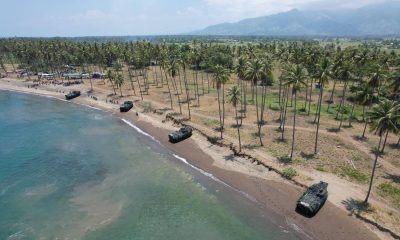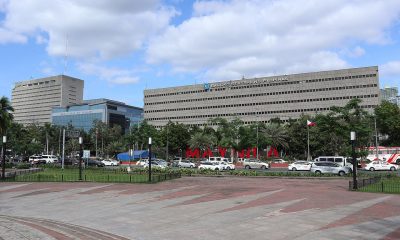American News
Trump plan ends research on uranium mining near Grand Canyon
FLAGSTAFF, Ariz. — U.S. scientists studying the effects of uranium mining around the Grand Canyon say they are lacking information on whether the radioactive element is hurting plants, animals and a water source for more than 30 million people.
And they would not get to fully gather it if President Donald Trump’s 2019 budget proposal is approved.
The U.S. Geological Survey is leading a 15-year study meant to determine whether a 1 million-acre area surrounding the national park needs protection from new uranium mining claims well into the future. Now, no one can stake claims until 2032, though a portion of that Obama-era ban is under review by the Trump administration.
The agency says it’s received far less for its study than what’s needed so far and would be left with nothing under Trump’s plan, which eliminates the money in favour of other priorities.
“We love to provide information,” Geological Survey hydrologist Fred Tillman said. “If you don’t get the funding to do it, you simply can’t do the studies.”
Former President Barack Obama’s administration implemented the ban in 2012 as uranium prices soared and a flurry of new mining claims came pouring in. It faced a backlash from Republicans, who touted improved mining techniques and lamented job loss in a remote area.
Without the study to document the effects of mining, some fear industry supporters would point to a lack of evidence of environmental harm to reopen the area to mining.
A federal appeals court recently upheld the ban, but the U.S. Forest Service is reviewing whether it’s necessary on 360,000 acres it manages. It follows an order by Trump to identify regulations that stand in the way of energy production.
The ban provided an avenue for the Geological Survey to study uranium-bearing pipes, groundwater flow, windborne dust, and plants and animals near mines. Of particular concern for the Obama administration was the Colorado River, a lifeline for millions of people in seven Western states that runs nearly 300 miles (483 kilometres) through the Grand Canyon.
Those supporting the ban have pointed to the legacy of death and disease on the nearby Navajo Nation, the country’s largest American Indian reservation, from Cold War-era uranium mining.
Without the science, the concern is “just opinion,” said Jan Balsom, senior adviser to the Grand Canyon National Park superintendent.
“I’m not comfortable with that being the only source of information,” she recently told reporters on a tour of the lower Colorado River basin.
The Geological Survey said its Environmental Health Mission funds the work, allocating $800,000 to $1.5 million a year to the studies between 2013 and 2017. That’s about half the estimated need annually. Trump’s 2019 budget proposal nixes all funding for the program.
The agency’s associate director for environmental studies, Geoff Plumlee, said he’s proud of the work done so far under budget constraints and will await word from Congress on what science will be produced.
Other federal agencies and universities work to fill the knowledge gaps and have contributed funding for the larger effort.
Northern Arizona is rich in high-grade uranium ore, and companies have staked hundreds of claims in the area. Even with the ban, federal agencies estimated a dozen uranium mines would open under claims that were grandfathered in.
The 15-year plan assumed two mines would open and close before the ban expires. But one mine is still trying to get permits and the Canyon Mine about 6 miles from the Grand Canyon’s popular South Rim entrance won’t open unless uranium prices rise significantly.
Energy Fuels Inc. owns both mines. Company president Mark Chalmers said the Canyon Mine will be mined responsibly and won’t harm people or the environment. He said its footprint is small and the ore extracted could provide an annual supply of power for Arizona.
“There will be some people that will say … ‘uranium mining has contaminated the water in Grand Canyon already,”’ he said. “It is false, it is false. Natural contamination from the uranium is already in the system. Mother Nature put it there.”






















